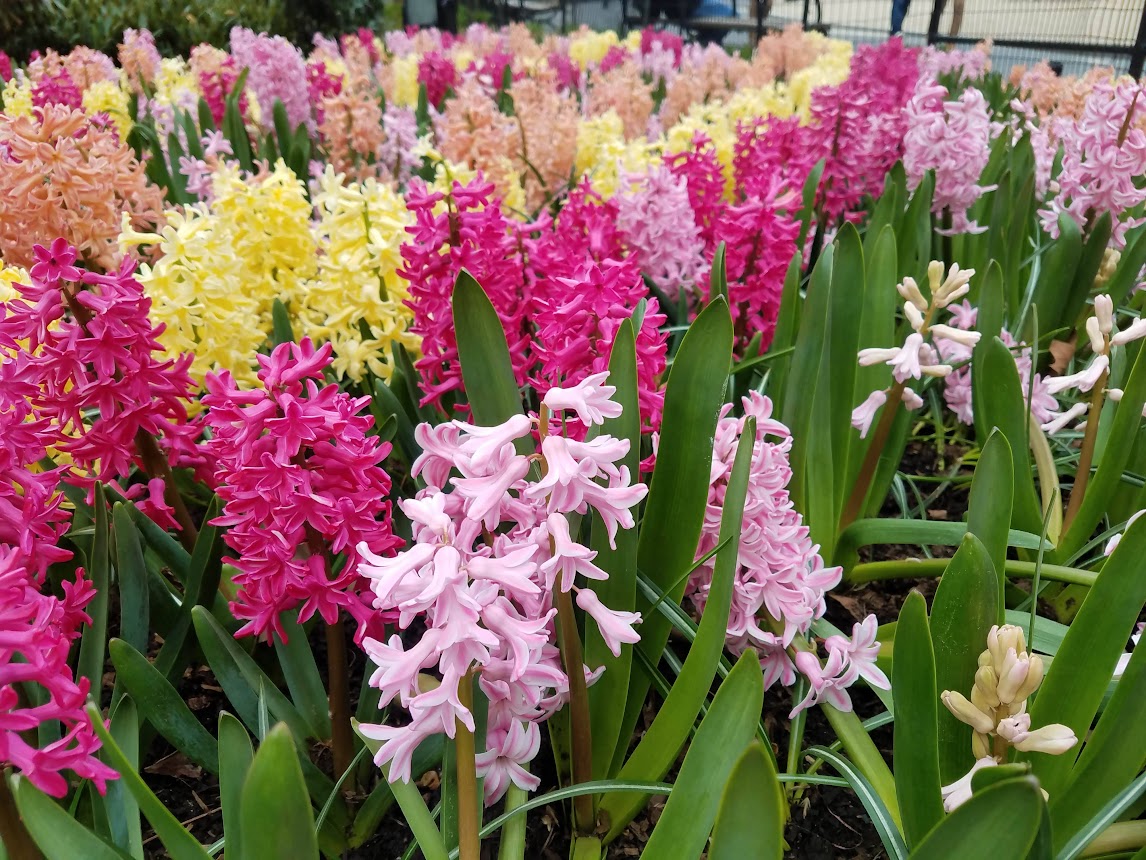This site uses cookies – Learn more.
Hyacinth Frenzy
Hyacinth Frenzy

This spring, Madison Square Park is sporting a hyacinth-focused display. Around the fountain, hyacinths in many colors dazzle in Fibonacci-inspired patterns. Hyacinths are fragrant, spring-blooming bulbs that are planted in the fall here in the northeast. The history of the hyacinth bulb is one that has been overshadowed by that of the tulip. The famous tulip mania that occurred in the 17th century drove the prices of tulip bulbs so high that a single bulb cost more than a Dutch worker’s day of earnings in the 1600s.
A similar economic bubble, this time over the hyacinth bulb, occurred about 100 years later. Due to the influence of French high society, a frenzy for hyacinth bulbs and elaborately decorated bulb vases for indoor flowers overcame the French elite. Madame de Pompadour, a friend of Louis XV, was integral in creating the fashionable designs for porcelain hyacinth vases. Vases could hold multiple hyacinth bulbs or cut flowers and were meant to be displayed in a prominent place in a home. Her love for hyacinths was said to have imprinted on the king himself, encouraging him to purchase hundreds of hyacinth bulbs for royal houses. Today one can find these beautiful tokens of a once-famous bulb in museums and personal collections.
One of the first publications on hyacinths was the Traité sur la Jacinthe, A Treatise on the Hyacinth written by George Voorhelm, the grandson of a prominent bulb-growing family. Published in 1752, the illustrations and descriptions within this work highlighted the process of forcing the bulbs for indoor blooms earlier than they would outside.
The highly sought-after scent of hyacinths also became popular in the 17th century for perfume making. To meet the demand for hyacinth fragrance, the French planted a growing number of bulbs. Early in the 18th century, a double-flowered hyacinth was discovered, creating even more of a frenzy. By the end of the century, there were more than 2,000 new and exciting clones on the market. In comparison, there are now just under four dozen. Double flower types are extremely rare and can only be found through heirloom flower growers.
To learn more about our Geometry of Flowers exhibition, visit the page here.



